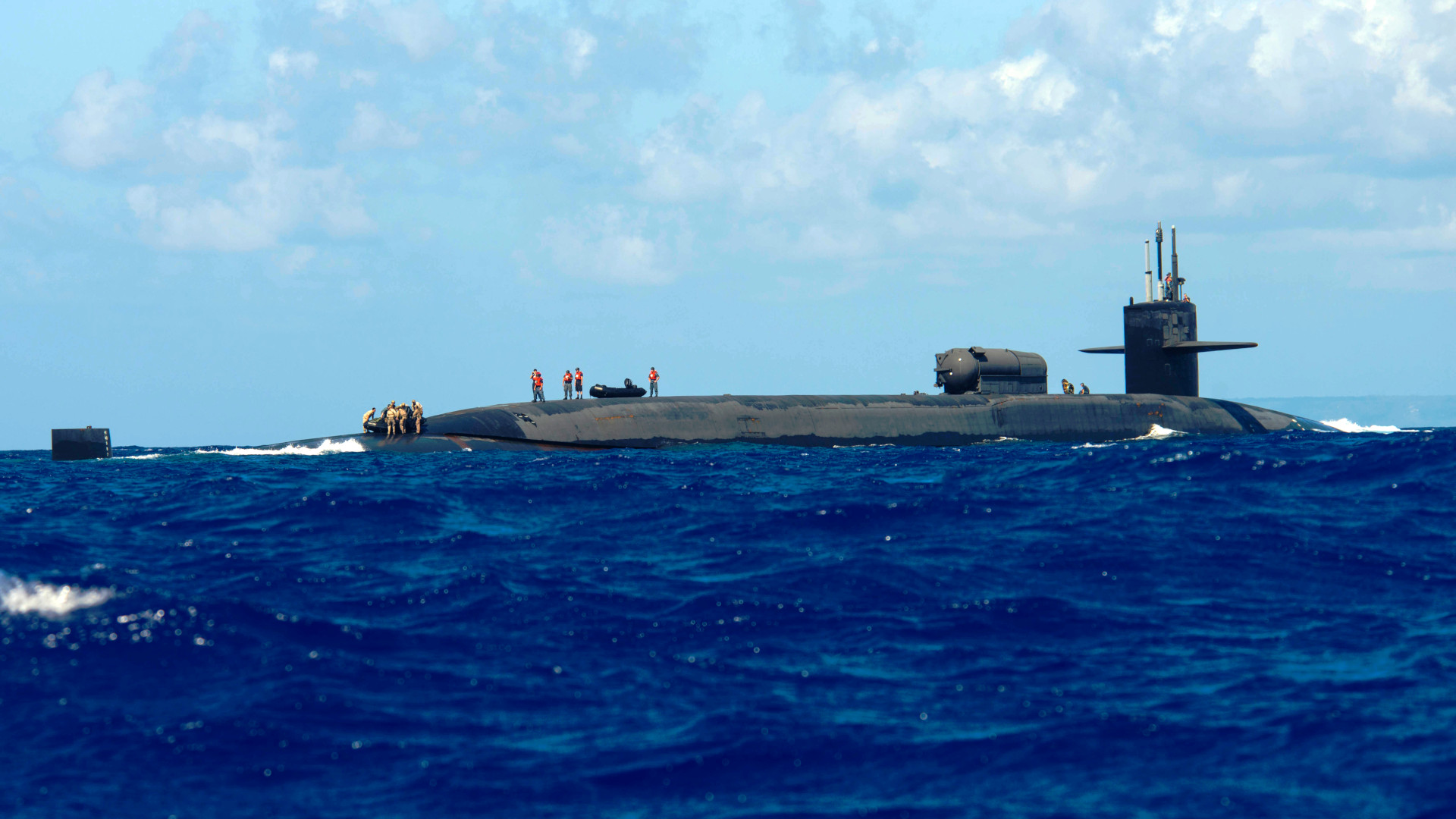The U.S. Navy’s Ohio class guided missile submarine USS Michigan made notable use of uncrewed underwater vehicles (UUV) in the course of operations between October 2022 and January 2024, it has emerged. During that time, the boat and its crew completed at least three secretive “national security” missions, as well as ones involving special operations forces, “in hostile and challenging environments.” As TWZ has explored in detail in the past, the extremely in-demand Ohio class guided missile submarines, or SSGNs, are uniquely capable multi-mission platforms that can perform a wide variety of tasks, including covert and clandestine intelligence gathering and special operations missions, as well as launching throngs of Tomahawk cruise missiles.

Details about Michigan‘s activities between 2022 and 2024 are included in a Navy Unit Commendation (NUC) awarded to the boat in December. The submarine is one of four Ohio SSGNs that were converted from Ohio class ballistic missile submarines, or SSBNs. Ryan Chan was among the first to notice that the NUC’s text was visible in a picture from the award ceremony that the Navy posted online yesterday. The Secretary of the Navy awards NUCs to Navy and Marine Corps units for “outstanding heroism in action against the enemy” or “extremely meritorious service, not involving combat, but in support of military operations,” according to an official manual. It is comparable to awarding the unit in question as a whole a Silver Star or Legion of Merit.
The full text of the NUC the Navy recently awarded to Michigan is as follows:
“For extremely meritorious service during assigned missions from 9 October 2022 to 16 January 2024. The personnel of Michigan displayed superb operational planning and risk management and precise tactical execution. Operating in hostile and challenging environments, Michigan completed three highly successful missions vital to national security and several special warfare operations. Their achievements contributed to multiple high priority national and theater objectives and significantly enhanced warfighting readiness in the Western Pacific. Michigan‘s performance advanced multiple naval special warfare and undersea warfare emerging capabilities as well as concepts of operations, tactics, techniques, and procedures, particularly involving the employment of unmanned undersea vehicles. By their truly distinctive achievements, demonstrated skill, and unfailing devotion to duty, the officers and enlisted personnel of USS Michigan reflected great credit upon themselves and upheld the highest traditions of the United States Naval Service.”
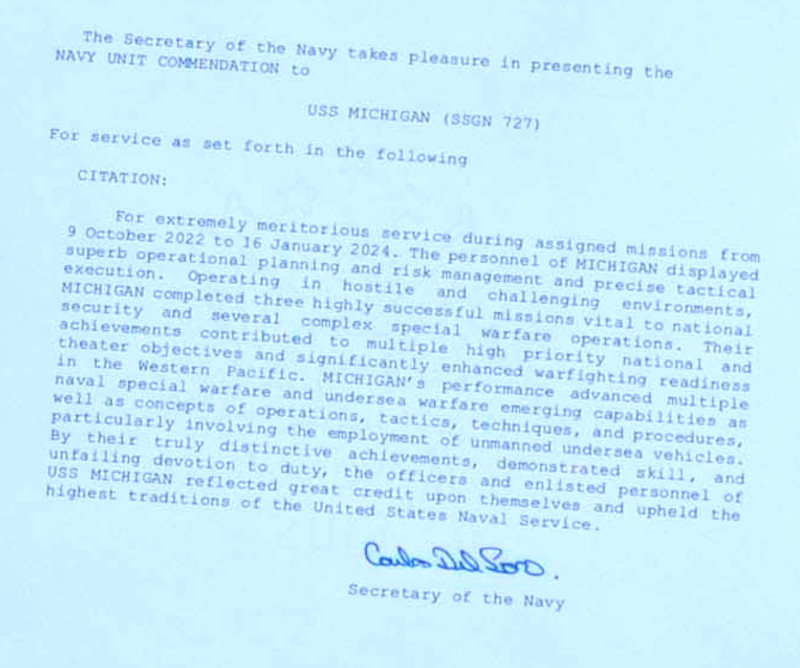
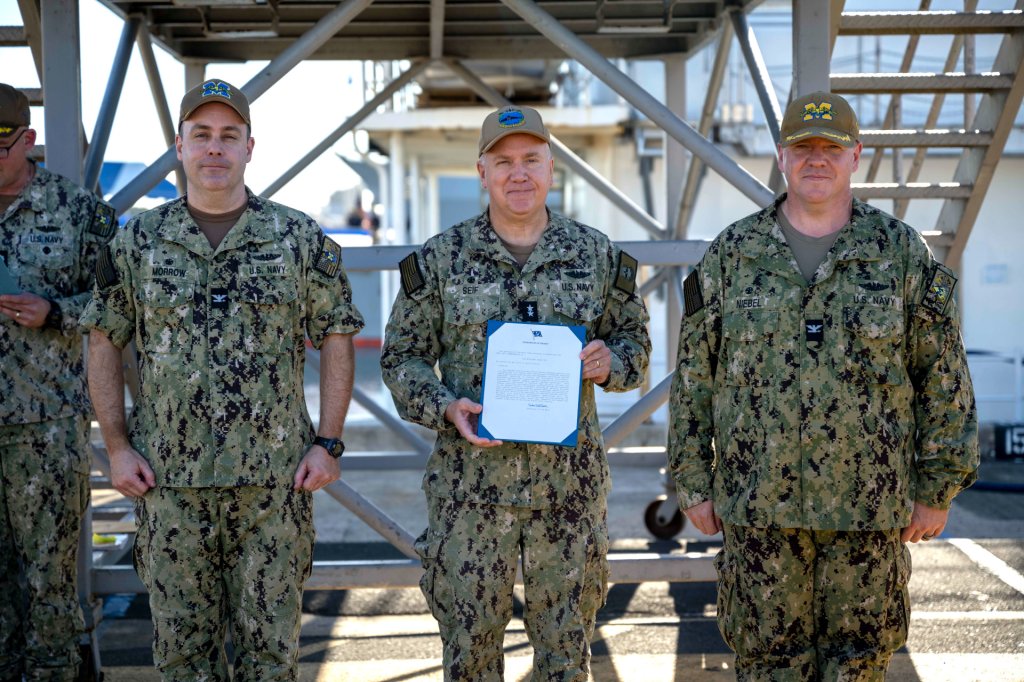
In Navy parlance, naval special warfare refers to special operations forces and missions. The NUC also does not say what types of UUVs Michigan employed or in what capacity.
“Having Michigan in theater adds to our already deep bench of undersea warfare capabilities throughout the region,” Navy Rear Adm. Rick Seif, then head of Submarine Group Seven, part of the U.S. 7th Fleet headquartered in Japan, had said in a very generic statement about the boat’s deployment back in 2022. “Their presence demonstrates our continued commitment to providing maritime security and deterrence in the Indo-Pacific.”
U.S. 7th Fleet’s area of responsibility extends from the Western Pacific to the Indian Ocean. Seif has since risen to the role of Commander, Submarine Force, U.S. Pacific Fleet.
The exact array of UUVs currently available for use by Ohio SSGNs is murky, but the submarines do have the ability to deploy (and in some cases recover) various types from their torpedo tubes, as well as any of their 22 large vertical launch tubes and up to two Dry Deck Shelters (DDS) on top of the hull. The DDSs, in particular, offer the potential to employ much larger and more advanced UUVs. The boats also have the ability to launch aerial drones.
Each of the 22 vertical launch tubes on the Ohio SSGNs can also be loaded with seven Tomahawk land attack cruise missiles for a total load of up to 154 of those weapons. In addition, these submarines have impressive intelligence fusion and command and control capabilities to support uncrewed operations, as well as other missions. You can read more about what is known about the Ohio SSGNs in detail in this past TWZ feature.

Without more details or context, we really don’t know exactly what missions Michigan performed between October 2022 and January 2024 or where they occurred, but here are some example possibilities.
UUVs from Michigan could well have been sent discreetly into denied or otherwise sensitive areas to gather intelligence about the disposition and capabilities of the forces of potential adversaries that would be valuable in the event an actual hot conflict breaks out. When it comes to the Pacific region, Chinese and North Korean authorities have already claimed to have seized American underwater spy drones on multiple occasions in the past 20 years or so.
UUVs could be configured to investigate and potentially even recover certain objects of interest on the seabed, as well. The U.S. military and the U.S. intelligence community have long histories of using specialized submarines and other capabilities to retrieve materiel from below the waves, both to glean new insights into foreign capabilities and to prevent American systems from falling into hostile hands, as you can read more about here.
Michigan could have also launched UUVs to help with more general intelligence, surveillance, and reconnaissance (ISR) tasks, including just mapping areas of the seafloor in key areas to help develop highly accurate charts to support future operations. The Navy has made clear in the past that so-called Intelligence Preparation of the Operating Environment (IPOE) is a key mission set for various tiers of underwater drones. In broad terms, IPOE involves the collection of a variety of information about a specific locale to help with operational planning, including for forthcoming amphibious and special operations missions. Crewed submarines, especially nuclear-powered ones and other types with very quiet advanced conventional propulsion systems, are already inherently ideal ISR platforms.
The Navy does also employ UUVs for other missions, including hunting for and neutralizing mines. The service has also been publicly working to acquire larger and otherwise more capable types that could be used for mine laying, kinetic attacks against enemy surface ships and submarines, as well as targets ashore, and as electronic warfare platforms. The Navy has additional uncrewed underwater capabilities in the classified realm.
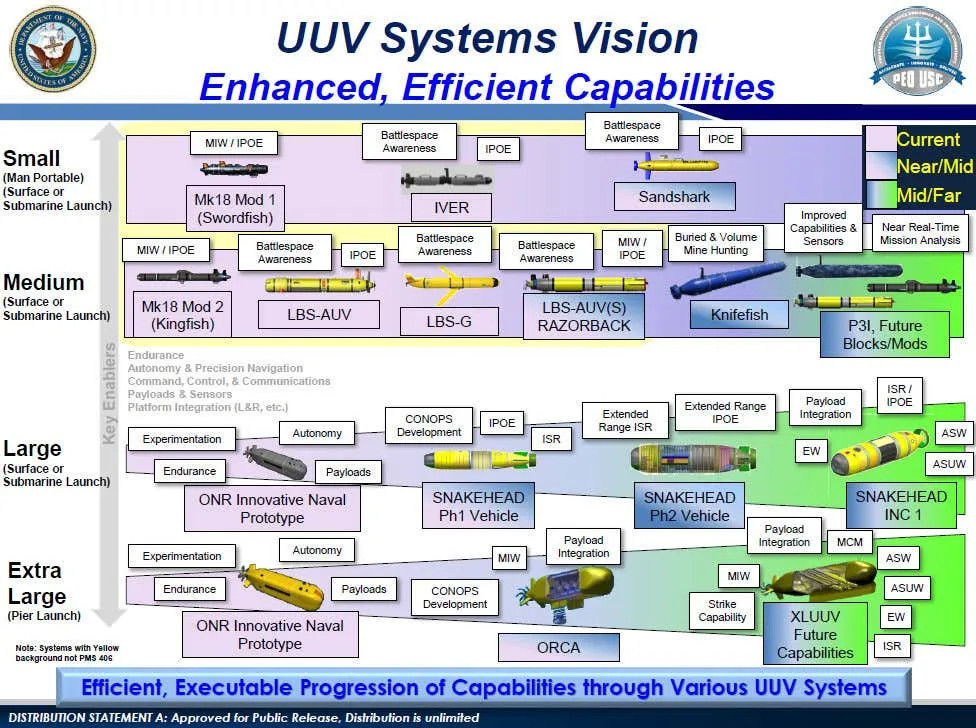
Michigan‘s NUC also highlights the Ohio SSGN’s significant capabilities to support special operations missions. The boats have dedicated berthing space for special operators – typically a contingent of up to 66 special operations forces personnel, but with a surge capacity of up to 102 operators – as well as the ability to launch and recover swimmer delivery vehicles (SDV). The aforementioned command and control capabilities further allow the boats to function as underwater special operations headquarters nodes. Special operations forces operating from one of these submarines could go ashore to gather additional intelligence, as well as conduct direct action raids.
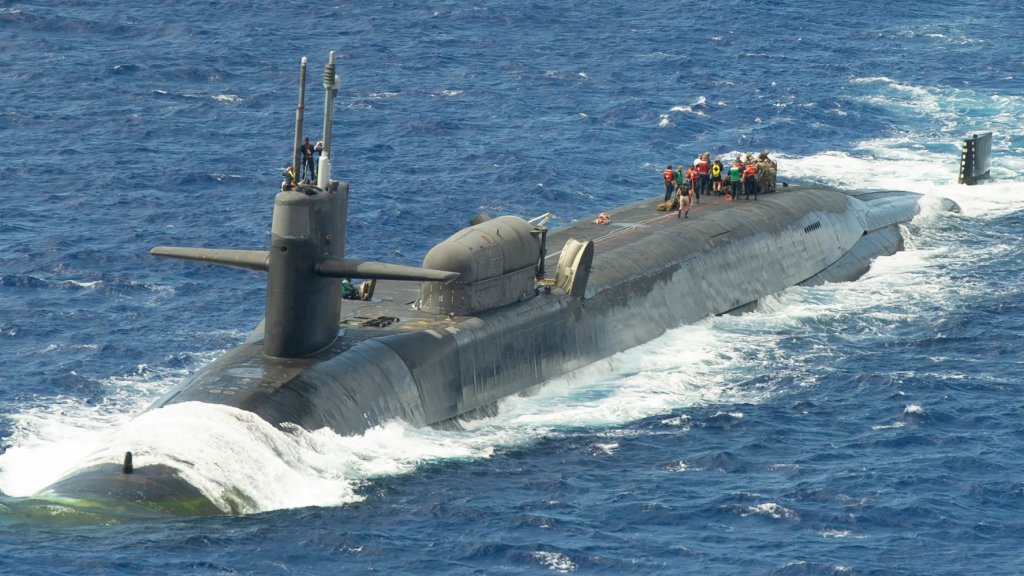
While much about what Michigan did to earn the NUC remains unknown, it does underscore the immense value the small fleet of Ohio SSGNs offer in peacetime, as well as during actual combat operations. In addition to being some of the most in-demand vessels in the Navy today, they are also among the most coveted assignments by the service’s submariners.
Just publicly sending one of these boats into a particular region, something the Navy has been more inclined to do in recent years, is enough to send major signals to opponents, as well as to allies and partners, far and wide. A prime example of this was Michigan‘s arrival in the South Korean port of Busan in 2017 amid heightened geopolitical fiction on the Peninsula. Ohio SSBNs, which typically keep even out of sight during deployments, have also been increasingly making public appearances for the same reasons.
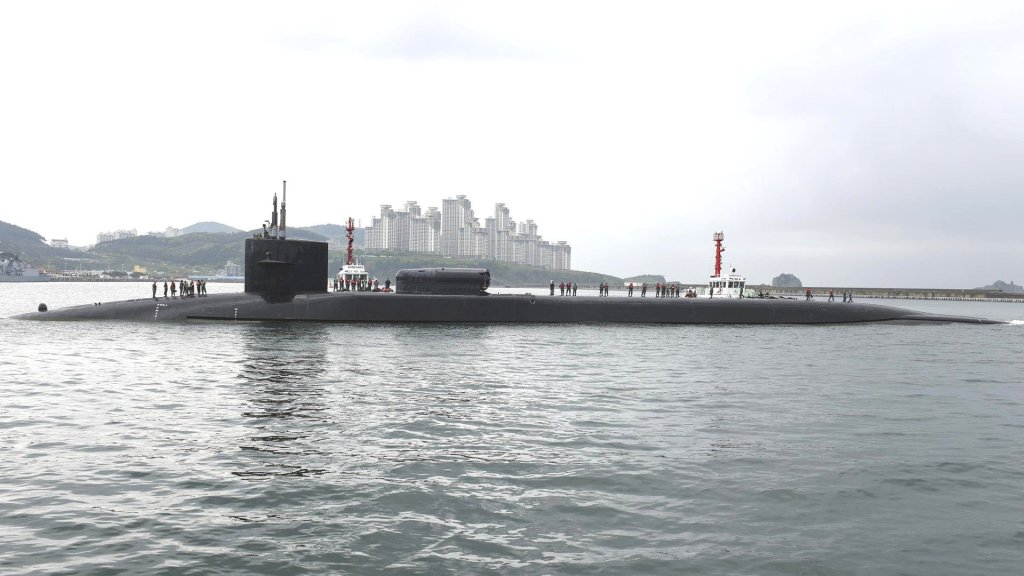
The award of the NUC to Michigan also highlights the various missions that Ohio SSGNs would be called upon to perform in a future fight in the Pacific, especially a potential high-end one against China. Subsurface warfare, in general, would be a key aspect of any such conflict, and the U.S. and Chinese armed forces have both been very actively working to expand their abilities to detect and track submarine activity.
At the same time, Michigan‘s new award comes amid uncertainty over the exact future of the Ohio SSGNs. The Navy is working to replace its Ohio SSBNs with new Columbia class boats, but that program has been facing delays and cost growth. There are also plans for a new “Large Payload Submarine,” possibly based on the Columbia design, to supplant the Ohio SSGNs, but those boats are not expected to arrive until the late 2030s, at the earliest. The Navy has said in the past that the Ohio SSGNs could all be decommissioned by 2028, though it has also been looking at extending their service lives, as well as that of a number of Ohio SSBNs. Enlarged subvariants of the Virginia class attack submarine, as well as existing examples configured to support special operations missions, would help fill the gap. However, they will not provide the same capability, at least in some regards, as found on Michigan and its sister submarines, at least based on what is presently known.

In the meantime, the Ohio SSGNs will continue to be heavily utilized, including for the kinds of extremely demanding and secretive operations that earned Michigan the NUC award.
Contact the author: joe@twz.com
